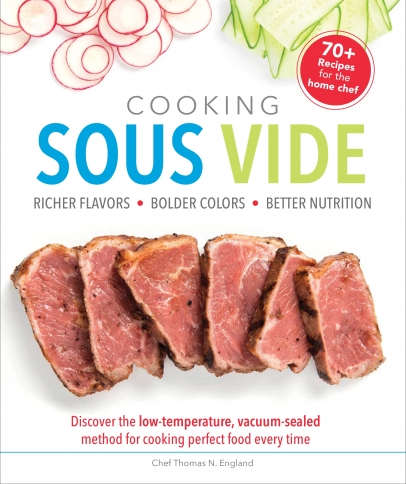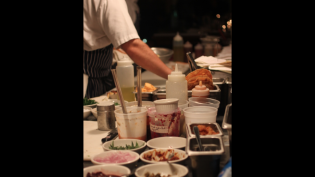A savory solution has arrived
Educated guesswork: For chefs both professional and amateur, it can be a point of pride, or a stumbling block. For every succulent ribeye pulled off the grill at the exact right moment, there’s a Thanksgiving turkey that could have used just a touch more moisture; a back heavy with pats can turn to one slouched with disappointment, with little margin for error in between.
Sure, the gauge on your backyard barbecue gives you a good idea of what’s happening under the lid– as does that little red popper oh so subtly jammed into the back of the bird – what if you knew to a fraction of a degree at what temperature your dishes were cooking? What if you could guarantee your meats and other foods would consistently arrive on the table in perfect shape?
Dream no longer. That reality exists, and an Indiana chef says it’s made possible by something called sous vide.
Sous vide, or “under vacuum” in French, is an emerging method of cooking in which food is sealed in plastic bags and then placed in water or steam. While this approach does typically require longer cooking times due to lower temperatures, dishes cook more evenly and retain more moisture.
At the forefront of the sous vide movement is Chef Thomas England, Ivy Tech Culinary School program coordinator. England, a Zionsville resident and professional chef for longer than 20 years, has written a sous vide-centric cookbook called Cooking Sous Vide that promises to bring the method to the masses.
“Sous vide is a technique that is gaining popularity globally,” Chef England said. “I ate dinner at Bouchon in Las Vegas several years ago, and the chef pulled me into the kitchen to show me what they were doing. It immediately grabbed my attention as something that was going to change how we cook.”
Upon returning to Indiana after his Sin City revelation, Chef England began researching sous vide and seeking out equipment to implement the practice – only to discover it was hard to come by at that time. Eventually he obtained some pieces, and since then he’s been experimenting in Ivy Tech classes with different sous vide techniques, temperatures and times.
The enhanced moisture and flavor sous vide cooking provides are its main selling points, but according to England, they’re perhaps not the most important.
“Sous vide cooking is exact to one-half a degree,” he said. “There are three different types of protein cells in meat, and each one breaks open at a different temperature, beginning at 142 degrees. The minute it hits 142, a third of the moisture is gone. By staying at 141 degrees, we can serve food that has more vitamins because those aren’t cooked out. This excites me.”
The impetus for writing the cookbook wasn’t due to a lack of available material on the subject – quite the opposite. According to Chef England, much of the existing how-to publications on sous vide touched on dishes even he would rarely prepare, let alone a person who cooks occasionally at home. And now that sous vide home appliances are available on a reasonably priced, retail level, the market has never been more ripe for what he has compiled.
“The only books on the market focus on the fancy foods,” said Chef England. “The most popular book even has things I have never heard of, so there is a big need to show people how to cook everyday foods. That is what this book focuses on – it’s the kind of book you would give your mom when you give her a sous vide appliance.”
Chef England, who has even created fluffy, moist cakes the sous vide way using mason jars, insists his Las Vegas experience has changed his perception of cooking, and he is ready to share his vision with others via his new endeavor.
“When I look at food now, I think about how to preserve the flavors of the natural ingredients and how to coax the most out of it,” he said. “The book really talks about food in a way that people can understand what is happening when it cooks. Knowing those foundations will change the way you look at things.”







